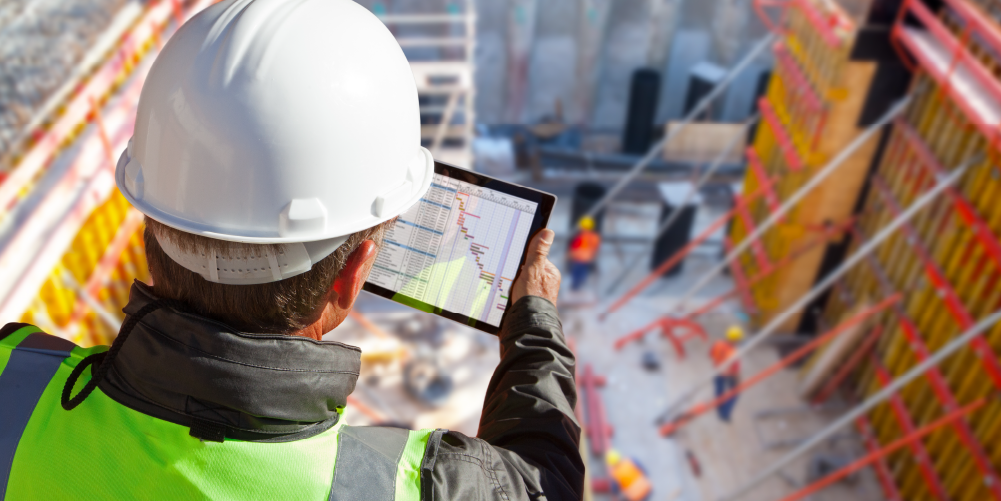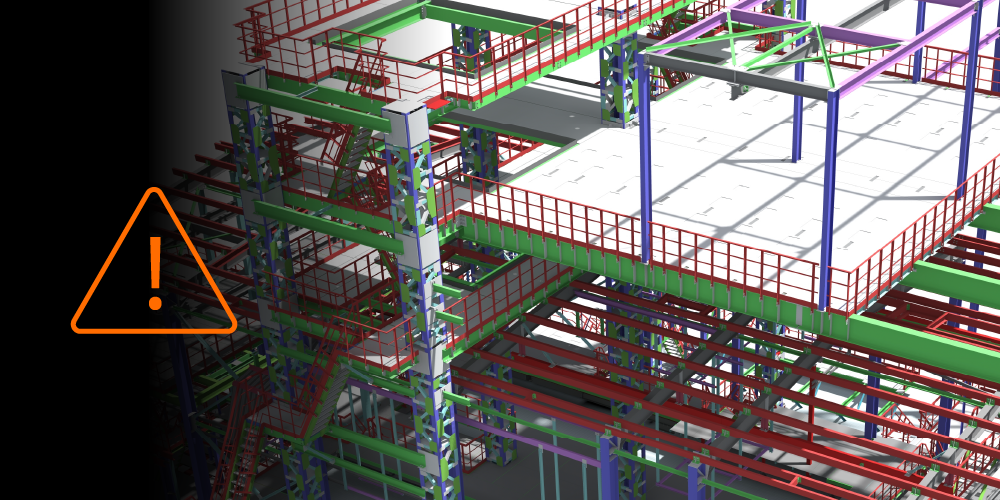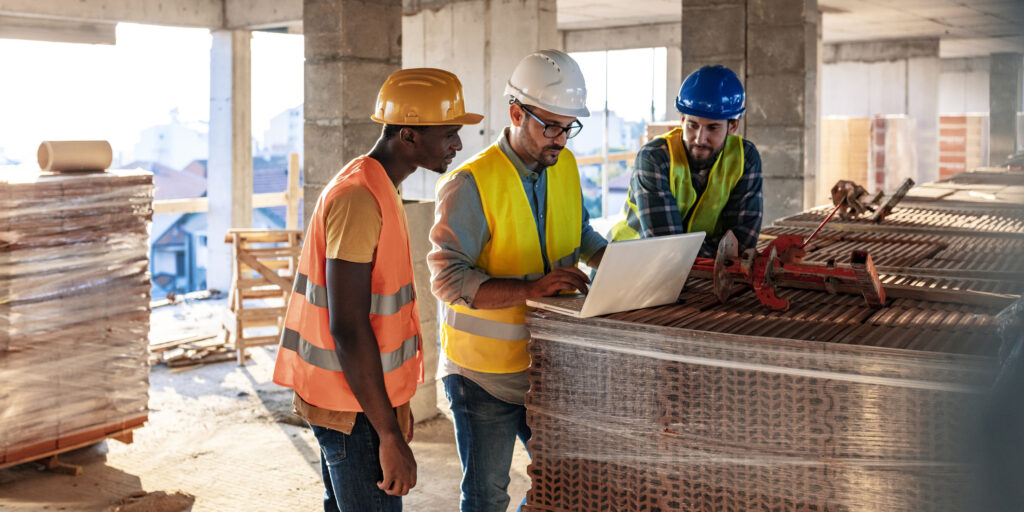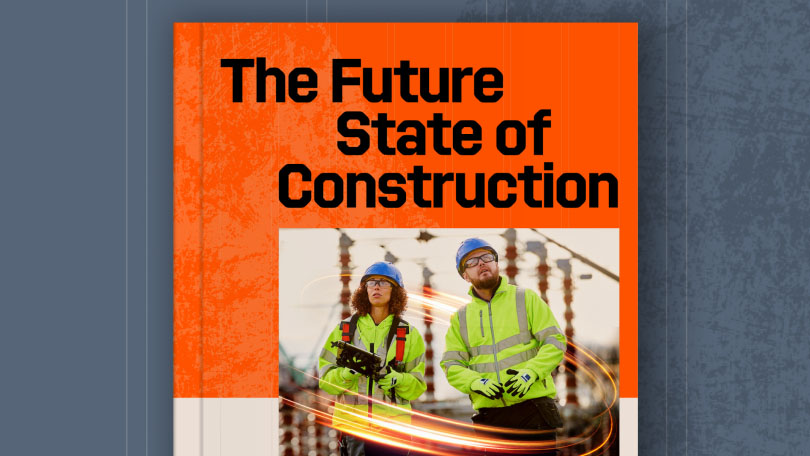Related Articles
— 8 min read
How to Prepare and Use a SWMS to Manage High-Risk Construction Work

Last Updated Sep 10, 2025

Josh Krissansen
48 articles
Josh Krissansen is a freelance writer with two years of experience contributing to Procore's educational library. He specialises in transforming complex construction concepts into clear, actionable insights for professionals in the industry.
Samantha Nemeny
31 articles
Sam—Samantha if she’s feeling particularly academic—has spent a decade in content marketing, with eight years focused on Australia’s construction industry. She has a knack for making complex ideas easy to understand, turning industry jargon into clear, engaging stories. With a background in SEO and marketing, she’s spent the past three years at Procore, helping industry professionals navigate the world of construction with content that’s both insightful and easy to digest.
Last Updated Sep 10, 2025

On Australian job sites, Safe Work Method Statements (SWMS) are more than a legal requirement, they’re a critical part of delivering high-risk construction work without indecent, delay or regulatory exposure.
For project managers, site supervisors, and head contractors, the SWMS is one of the few tools that directly connects planning, compliance, and day-to-day execution. It forces clarity: What’s the hazard? Who owns the control? And what happens when conditions change?
But not all SWMS are created equal. Vague statements and templated language won’t hold up under inspection—or protect your crew when it counts.
This article breaks down when SWMS are required, who’s responsible for developing them, and how to prepare, brief, and monitor them so they actually work on site
Table of contents
What is a Safe Work Method Statement (SWMS)?
A Safe Work Method Statement (SWMS) is a site-specific safety planning document required for all high-risk construction work under Safe Work Australia’s model WHS regulations
Here’s how it works:
- The SWMS identifies specific high-risk tasks and clearly describes the associated hazards and the control measures required to eliminate or minimise risk.
- For each of these, it provides information on the roles and individuals who would “own” or be responsible for carrying out and monitoring each control.
- SWMS are prepared before work begins, reviewed whenever site conditions change, and kept readily available for any workers affected by (or involved in) high risk activities.
Because the SWMS lists out tasks, it’s tempting to view it as a kind of list of step-by-step work procedures. However, it’s much more strategic to consider SWMSs an essential risk management and safety planning tool.
And since its main aim is to prevent incidents before and during high-risk activities, many contractors now use safety management software to create, issue, and manage SWMS in real time across projects.
Why are SWMSs Important?
The development and use of SWMSs go beyond compliance. Functionally speaking, SWMSs contractors manage safety risks and deliver projects more efficiently. Here are four primary benefits of an SWMS for construction work:
Improve Safety Outcomes
SWMSs require early identification of hazards and documentation of controls. This proactive approach helps prevent serious incidents by shifting teams from reactive problem-solving to forward planning.
Support Legal Compliance
High-risk construction work cannot proceed without an SWMS in place. These documents demonstrate due diligence under WHS Regulations and help contractors avoid stop-work notices, penalties, or legal action.
Strengthen Team Coordination
Preparing and briefing a SWMS ensures that supervisors and workers understand site-specific risks, agreed controls, and individual responsibilities before work begins.
Reduce Project Costs and Delays
Fewer safety incidents mean fewer delays, lower injury-related costs, and reduced risk of reputational damage. A well-implemented SWMS also supports broader quality and risk management systems, contributing to more predictable project delivery.
When is a SWMS Required?
Under Australia’s model WHS Regulations, a SWMS is mandatory for any high-risk construction work. This legal requirement applies across all states and territories.
High-risk construction work involves activities with an elevated risk of serious injury or death, such as:
- Work where there is a risk of falling more than 2 metres
- Work near live electrical installations or services
- Demolition of load-bearing structures
- Work in or near a confined space
- Work involving asbestos
Who Prepares a SWMS?
The party carrying out the high-risk construction work—including subcontractors, specialist contractors, or self-employed workers engaged to perform the task—is responsible for preparing an SWMS.
Usually, this means assigning a principal contractor or Person Conducting a Business or Undertaking (PCBU)as the individual who will lead the development, ensuring that their team prepares, reviews, and submits a compliant SWMS. They’re also the point-person in charge of keeping the SWMS accessible on-site and updating the asset when conditions change.
While the PCBU leads the creation of the SWMS, they’re not the only role or individual contributing to the content captured within the statement. Along with any health and safety representatives, workers offer key input and contribute to an accurate document.
The PCBU needs to ensure that their interests are reflected because this ultimately makes it more likely to be followed. SWMSs are meant to be practical and applicable in real-world situations, while also supporting broader, team-wide goals like shared accountability.
How to Prepare a SWMS?
A SWMS that doesn’t match real-world workflows is worse than useless—it creates risk.
Here is how to prepare one that works:
Consult With Relevant Workers and Stakeholders
Begin by identifying all high-risk activities within the scope of work. Engage supervisors, health and safety representatives, and the workers responsible for the tasks.
This early consultation helps uncover site-specific risks and ensures the controls are practical for real-world conditions. It also builds understanding and buy-in, which supports better compliance.
Identify Hazards
For each high-risk task, document the potential hazards.
These may arise from site layout, weather, nearby services, equipment, or materials.
Reviewing past incidents or similar job conditions can also help uncover less obvious construction risks. The goal is to capture all credible hazards that could impact worker safety.
Pro Tip
Every SWMS should read like an instruction to the crew, not a submission to the regulator. Precision in wording drives accountability and safer execution.
Assess Risks
Once hazards are identified, assess each one using a standard risk matrix.
Consider both the likelihood of the event occurring and the severity of the consequences. Prioritise both likely and severe hazards, and assign risk ratings to guide the level of control required.
Assign Control Measures
Apply the hierarchy of controls to eliminate or reduce each risk as far as reasonably practicable.
Controls must be specific, actionable, and achievable in the field. Every control should clearly explain what is required, when it must be done, and what standard must be met.
Controls should be written for the crew, not the regulator. The goal is safe execution—not legal coverage alone.
Assign Responsibilities
For each control, clearly state who is responsible for implementation and monitoring. Confirm that those assigned understand their role and how it fits into the broader SWMS.
Responsibilities should be practical and enforceable, with accountability maintained throughout the task.
Document the SWMS
Use a clear, standardised template that includes:
- A description of the work
- Identified hazards and associated risks
- Agreed controls and assigned responsibilities
- Procedures for monitoring, review, and revision
Keep the language direct, focusing on what needs to happen on site. Where relevant, include diagrams, annotated plans, or supporting documentation that improves clarity.
Review the SWMS With Workers
Before work begins, conduct a pre-start briefing with all involved personnel.
Walk through the SWMS, confirm that controls are understood, and clarify any questions. Use this opportunity to reinforce expectations and confirm who is responsible for what.
Best Practices for Implementing and Monitoring a SWMS
A SWMS is only effective when actively communicated, monitored, and regularly updated. Implementing the following practices will ensure that the SWMS remains relevant, practical, and enforceable throughout the task.
Continuously Monitor Work and Verify Controls
SWMS compliance must be actively supervised. Relying on workers to self-manage high-risk tasks is insufficient. Site managers should build routine verification into daily workflows:
- Observe work in progress and compare it directly against the documented controls
- Use checklists, digital forms, or field inspection tools to record compliance in real time
- Speak with workers regularly to assess whether controls are practical and being followed as intended
Encourage reporting of unsafe conditions or breakdowns in the SWMS process. Workers should feel supported, not penalised, for flagging issues that could compromise safety.
Enforce and Adjust as Needed
Stop the task immediately if a control measure is not followed or proves unworkable on site. Investigate why the failure occurred (whether due to unclear wording, site conditions, or communication gaps), and update the SWMS accordingly.
Once revised, rebrief the affected team and confirm that everyone understands the change. This reinforces a safety culture where stopping unsafe work is expected and actively supported.
Revise the SWMS When Conditions Change
A SWMS is only useful if it reflects current site conditions. When key variables shift, the document must be updated before work continues. Review and revise the SWMS when:
- Work zones, access paths, or staging plans are modified
- New subcontractors, equipment, or materials are brought onto site
- A near miss, incident, or hazard reassessment identifies new risks
Revisions should be immediate, not deferred to end-of-day reports. Document the update, confirm everyone affected is briefed, and track who received the change.
Use Construction Safety Software to Streamline Monitoring
Digital safety platforms help manage SWMS updates and tracking more efficiently, especially on large or multi-site projects. They can support:
- Instant distribution of revised documents
- Version control with audit-ready records
- Real-time compliance alerts and issue tracking
- Integration with daily site reporting and inspection tools
Software should simplify SWMS management, not add complexity. Choose systems that align with your existing safety workflows and give supervisors the tools to act quickly when issues arise.
Promote Ongoing Learning and Improvement
Use SWMS implementation as a feedback loop. Every project provides lessons that can strengthen future planning. Set up a structured review process to:
- Analyse site data for recurring issues, missed controls, or repeated clarifications
- Capture field-level feedback to improve the clarity and practicality of future SWMS
- Update internal templates to reflect more effective phrasing, sequencing, or visual aids
Run regular training sessions to reinforce how SWMS work, what legal responsibilities apply, and how workers can report concerns. Strong implementation depends on shared understanding and consistent application.
SWMS help construction teams manage risk and stay compliant.
A Safe Work Method Statement (SWMS) helps contractors stay compliant, protect workers, and reduce the risk of costly delays. Construction teams can control high-risk activities and improve project outcomes by preparing, communicating, and actively monitoring the SWMS.
Categories:
Written by

Josh Krissansen
48 articles
Josh Krissansen is a freelance writer with two years of experience contributing to Procore's educational library. He specialises in transforming complex construction concepts into clear, actionable insights for professionals in the industry.
View profileSamantha Nemeny
31 articles
Sam—Samantha if she’s feeling particularly academic—has spent a decade in content marketing, with eight years focused on Australia’s construction industry. She has a knack for making complex ideas easy to understand, turning industry jargon into clear, engaging stories. With a background in SEO and marketing, she’s spent the past three years at Procore, helping industry professionals navigate the world of construction with content that’s both insightful and easy to digest.
View profileExplore more helpful resources

Managing Direct Costs in Construction: How Visibility Drives Profitability
Direct costs define the financial reality of every construction project. They cover the labour, materials, and equipment that drive delivery and determine profitability. But even the best-planned budgets can shift...

BIM Clash Detection: Reducing Rework, Delays, and Risk in Construction
Design clashes can be a significant hidden cost in construction, as each conflict between systems risks expensive rework, project delays, and reduced margins. BIM clash detection empowers teams to identify...

Next-Gen Job-Costing: Ready to Move? 5 Things to Consider Before You Get Started
In this three-part series, Quantity Surveyor turned Financial Solutions Specialist Clint Burgess uncovers the real-world gains for people, processes, and profits when businesses move from legacy to next-generation Enterprise Resource...

From Workarounds to Workflow: Solving Construction’s Legacy Job-Costing System Challenges with Next-Gen Tools
In this three-part series, Quantity Surveyor turned Financial Solutions Specialist Clint Burgess uncovers the real-world gains for people, processes, and profits when businesses move from legacy to next-generation Enterprise Resource...
